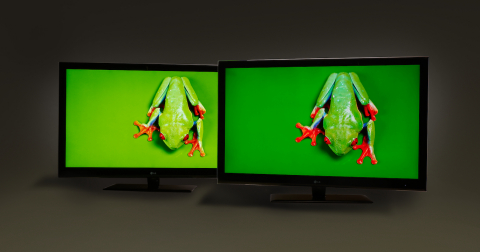3M and Nanosys to Bring Quantum Dot Tech to CE Devices
May 23, 2013
Quantum dot technology reportedly makes displays more colorful while consuming less power, and development by 3M and Nanosys is nearly ready for use in smartphones, tablets and TVs. 3M issued a press release on Tuesday announcing that its Quantum Dot Enhancement Film (QDEF), which allows up to 50 percent more color than current levels in LCD devices, will be made available to manufacturers starting late in the second quarter of this year.
“3M has teamed with Nanosys, Inc., to produce the 3M QDEF solution specifically to deliver more color, and to make devices such as smartphones, tablets and televisions, lighter, brighter and more energy efficient,” notes the release. “Current LCDs typically are limited to displaying 35 percent or less of the visible color spectrum. This means the viewing experience on an LCD can be vastly different than what a person sees in the real world. Wide color gamut displays will allow consumers to enjoy more visceral, more immersive and truer-to-life color.”
Quantum dots are light-emitting nanoparticles that measure a mere 2-10 nanometers in diameter (10,000 times narrower than a human hair). They can produce more colors than conventional pixels, since their size — and the resulting wavelength of light they emit — can be precisely controlled. The 3M image above shows a comparison of LCDs without (left) and with (right) 3M’s QDEF solution.
“The special film will serve as a backlight for LCD displays, and because it offers such precise control of color, it can shine in exactly the right color through specific pixels on the screens, resulting in a much wider range of color,” reports Mashable. “3M says trillions of those little dots can fit in one backlight unit for an LCD, replacing the less-efficient and less-precise LED or florescent backlights in today’s LCD screens.”
“Best of all, because this quantum dot enhancement film is replacing just the backlight in an LCD display, this new technology can be dropped into current LCD designs, requiring no changes in current manufacturing processes for LCD displays,” notes the article.


No Comments Yet
You can be the first to comment!
Leave a comment
You must be logged in to post a comment.